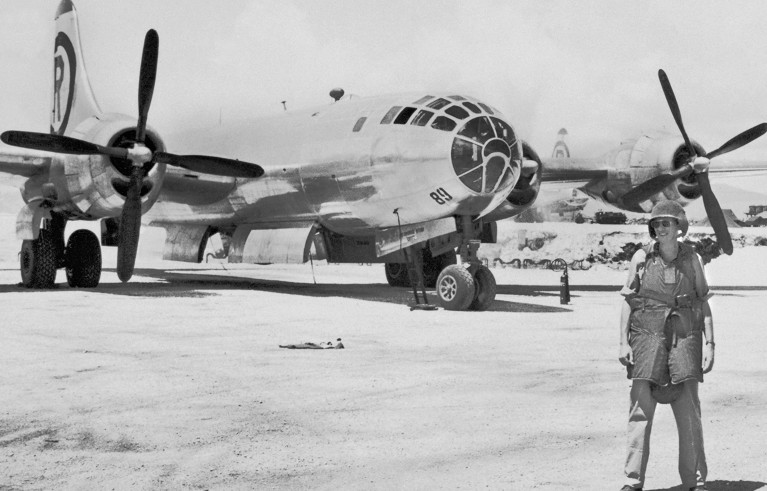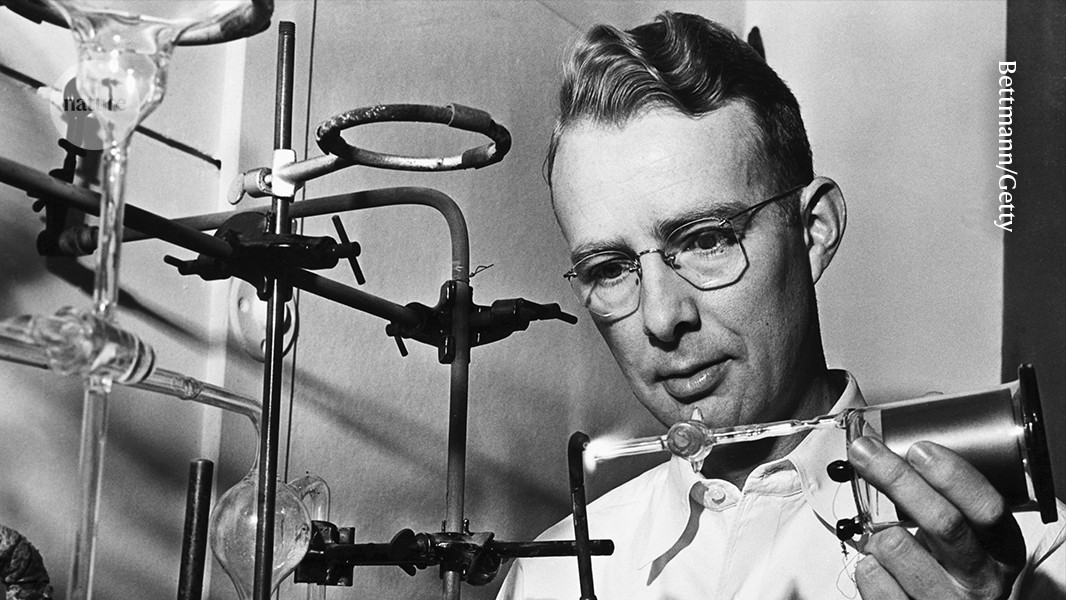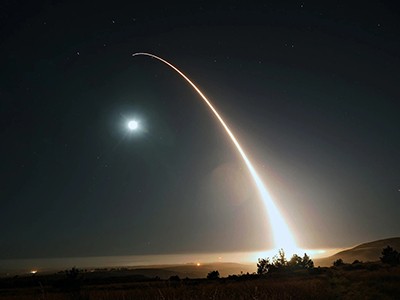Collisions: A Physicist’s Journey from Hiroshima to the Death of the Dinosaurs Alec Nevala-Lee W. W. Norton (2025)
Physicist Luis Alvarez (1911–88) led such a vivid life that he is a biographer’s dream. Agile and daring, Alvarez was also pitiless, egotistical and abrasive. He flew in one of the aeroplanes that dropped the atomic bomb on Hiroshima, Japan, on 6 August 1945. He engaged publicly with controversial topics, including whether unidentified flying objects (UFOs) existed, and who might have been behind the assassination of US president John F. Kennedy on 22 November 1963. He also came up with a persuasive explanation for what killed the dinosaurs.
Nuclear-weapons risks are back — and we need to act like it
The challenge, for a biographer, is how to describe the science that drove Alvarez. As revealed in Collisions, Alec Nevala-Lee, who has written novels as well as biographies, is up to the task. Beyond Alvarez’s personality and his moments in the public eye, Nevala-Lee expertly conveys his path through an extraordinary era of US particle physics — a turbulent time that required courage, luck and skill.
The dramatic opening scene, at a California shooting range in 1970, is unforgettable. The only person charged with Kennedy’s assassination fired his gun from behind the president, but a video showed Kennedy’s head snapping backwards. To some people, this suggested that a second gunman fired from the front, and that a conspiracy was involved. Alvarez realized that this need not be the case.
From a physics perspective, Alvarez thought, a bullet fired from behind could have shattered Kennedy’s skull in such a way that the momentum of the resulting jet of bone fragments pushed the head back. Alvarez enlisted a sharpshooter to fire bullets at a series of melons to test this idea, which the results supported. Nevala-Lee manages to capture the drama, physics, gruesomeness and political importance of this episode, all at once.
Diverse talents
Alvarez owed his Hispanic surname to his grandfather, an immigrant from Spain. After earning his PhD in 1936 at the University of Chicago, Illinois, he went to work for accelerator builder Ernest Lawrence at the University of California, Berkeley. Four years later, after the start of the Second World War, Alvarez went to the Massachusetts Institute of Technology (MIT) in Cambridge to work on radar technology. The knowledge he gained allowed him to help develop the first system that enabled pilots to land during limited visibility using only instrumentation. Alvarez also designed pressure gauges to measure the strength of explosives, earning him a seat on one of the planes bound for Hiroshima.

Alvarez witnessed the bombing of Hiroshima, Japan, from a plane in August 1945.Credit: US Government/Lawrence Berkeley Laboratory
The book’s description of Alvarez’s flight to Hiroshima and back is haunting: meeting the other planes over Iwo Jima, seeing the flash of white light as the bomb exploded and the telltale N-shaped pulse on the oscilloscope screen and experiencing the first shock wave followed by a second one, reflected from the ground.
In the 1950s, after returning to Berkeley as a physics professor, Alvarez developed bubble chambers — instruments that recorded on film the tracks of particles created by particle accelerators. This work earned him the Nobel Prize in Physics in 1968. His research contributed to substantial changes in US high-energy physics, which transformed from being a field with a few creative individuals to one involving large teams working in industrial facilities.
Controversial decisions
Many scientists might find making discoveries an end in itself, but Nevala-Lee identifies Alvarez’s particular talent of using inventions to unlock practical puzzles that seem far from physics. “If someone thinks of a key,” Alvarez said, “I can fit it into something.”



